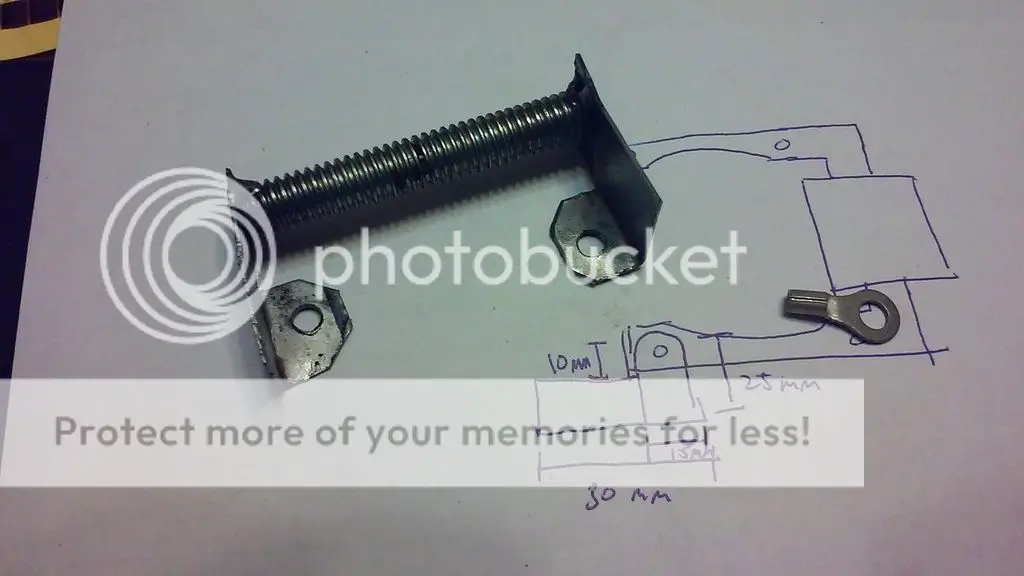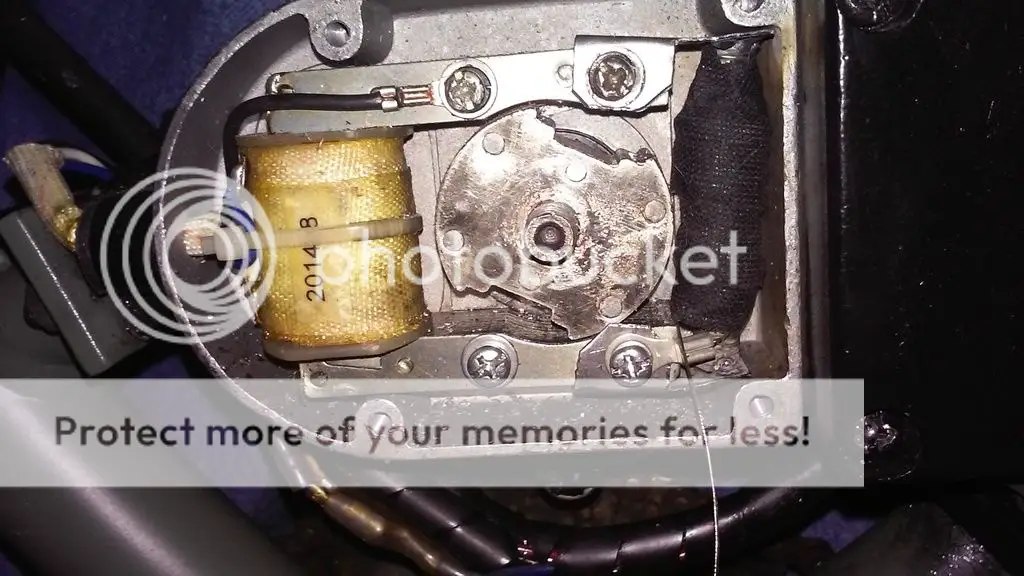Snake oil.
Really, it's a gimmick at best. The white wire is for marketing purposes. The kits sell better because they can advertise that you can run lights off of it.
To explain how it works will take some understanding of electric generators and electronic circuits.
First off, there's a magnet that the engine turns. It's a plain jane permanent magnet. Ever seen "magnetic lines of flux"? Magnets create invisible lines of magnetic flux. This can be seen and proven by placing ferrous (iron) shavings on a piece of paper, then placing the magnet underneath. You will see the shavings create actual lines between the north and south poles.
When the magnet rotates, it also turns the flux lines. When the flux lines pass over a wire, it induces a voltage in the wire. Coil that wire up and the flux cuts through a whole bunch all at once, inducing an even stronger voltage. Give the wire a path (as in through a circuit, then back to the coil) and current will flow.
Now, the " 6v" white wire is just a little wire that's hanging out of the middle of the coil. If you put a load on that wire, you create a parallel path, meaning the current can find another way to go. This guy back in the day named Kirchoff figured out that if parallel paths are made, the voltage won't change on the individual branches, but the current on each branch in the parallel circuit is cut down.
What that means is that if you use the white wire, you will lose current to the CDI. The output of the CDI is too low anyway, so you don't need to do anything to reduce it any more.
Now, if you use that "12v" coil, it could work without added drag on the ignition system. It will, however, add drag to the engine. Yes, an alternator on a car adds drag to the car's engine too. You just never realize it because it's never off.
To use the "12v" coil, you will have to rectify and regulate the output. See, as the "north" pole of the magnet passes by perpendicular to the coil, it produces a max positive voltage. The more it turns away from perpendicular, the weaker the generated voltage gets, until it's parallel with the coil and the voltage output is zero. Here comes the south pole, and as it approaches the coil perpendicularly, it generates a negative voltage! The cycle continues as it continues to rotate. This produces an AC sine wave. LEDs can't use AC, since they require DC. I mean, you *could use AC, but it would flash. LEDs are "Light Emitting Diodes". A diode only let's current flow in one direction, not both.
So how do you make the cyclic sine wave of AC to DC? Easy. A collection of 4 diodes arranged in what's called a " full wave bridge rectifier ". Diodes operate like electronic check valves. So what you end up with is a bunch of positive pulses. Imagine that sine wave with all the negative humps flipped up to positive humps.
But that's not very DC. DC is a constant voltage, not an up and down. And even then, the voltage output is uncontrolled. As the speed increases, the voltage output increases too. So at idle you'll get next to nothing, and you could get something like 20v at full speed.
On top of that, you'll need to limit the amount of current output. Say you hook it up and the system draws more current than those little coil wires can handle. Then those wires would glow red hot and burn up. Then you're having to replace the coil a lot.
So, you'll need
-separate coil
-rectifier
-filter
-voltage regulator
-current limiter
I know my electrical and electronic circuits pretty well, but I'm not good at designing them. So... sorry I can't help there. If it's broke, I can fix it. I can tell you how it all works. I just can't design one to save my life!






